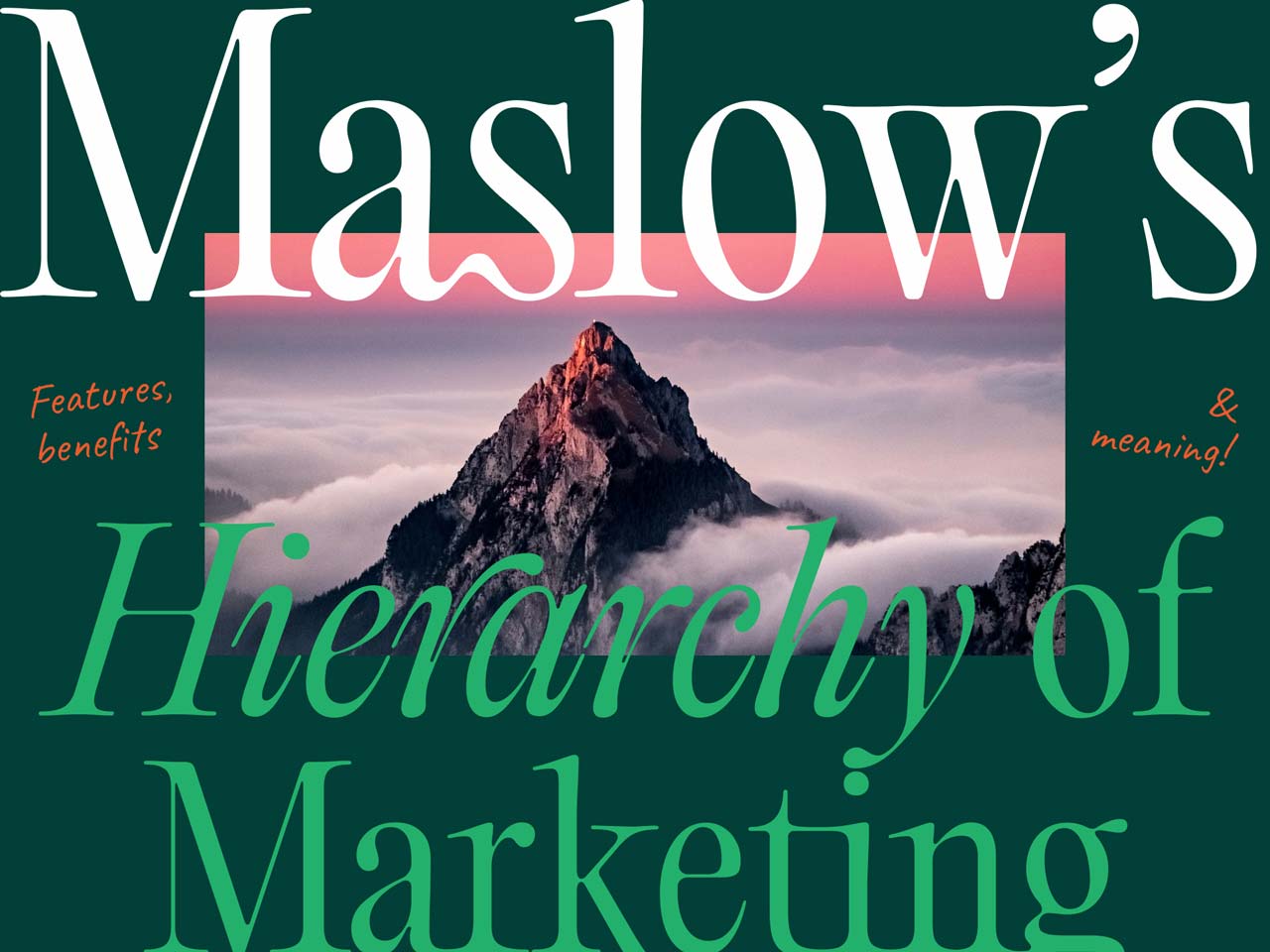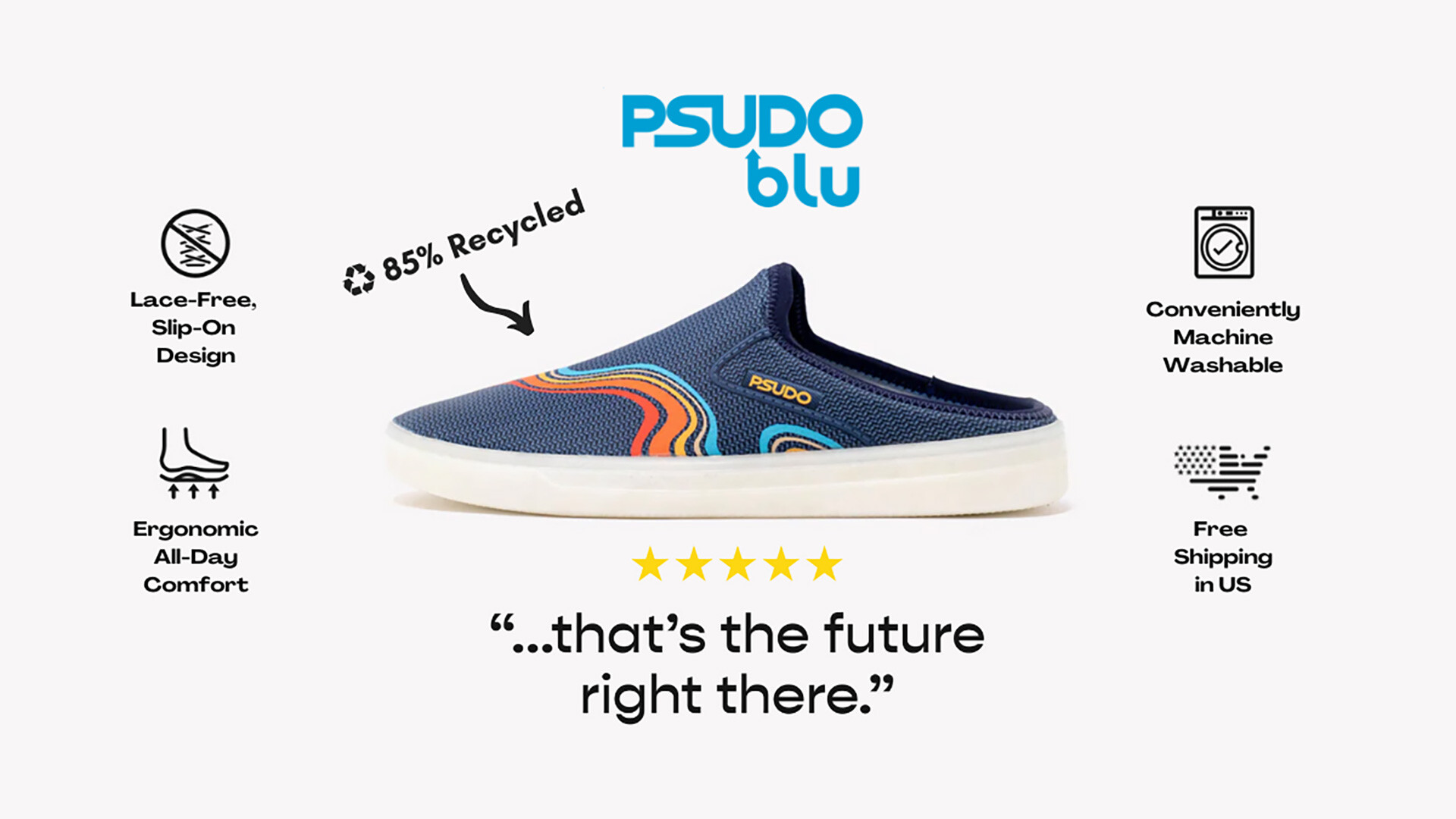
Level 1: Basecamp (Features)
“Sell benefits, not features,” is one of the oldest tropes in marketing. It’s also totally wrong.
When used at the right point in the marketing funnel, features—or lack thereof—can mean the difference between a sale and an abandoned shopping cart.
Often times, product features can be valuable technical deal-closers toward the bottom of the funnel when a prospect is verifying mandatory requirements. In other cases, they can also be useful in grabbing the attention of high-intent, goal-oriented, hyper-focused customers.
When it comes to e-commerce marketing, features are often the most important level of communication, because people can buy right then—if the features fit their needs.
A good example: when working with our client PSUDO, the hands-down most successful ad format we landed on among the dozens tested was the following:

The above ad, which combines a simple product shot, a customer review, and a bunch of features (with some benefits worked in) outperformed all other ad formats by more than 50%.
Don’t sleep on features.
Level 2: Advance Base Camp (Benefits)
Benefits equate to the value that features bring:
- Lace-free shoes → Slip-on convenience
- Mobile RX delivery → Healthcare anywhere
- Organic dog food → More years/memories with your doggo
Benefits are one step up on the psychological hierarchy because they answer the natural follow-up question that many features inspire: so what?
Benefits are useful at the top of the marketing funnel, especially for newer brands that aren’t yet ready to sell meaning. You can’t skip this step in the hierarchy—a brand can’t selling meaning until it demonstrates practical value in the lives of the customers it serves.
Take the video ad we conceived and developed for Contentful:
No features, but also, no meaning. Just a good ol’ fashioned comedic depiction of a company’s content team in chaos—the state of reality before Contentful is a part of the equation.
Level 3: Summit (Meaning)
Finally, we arrive at meaning, something everyone aspires to sell, but that most people and brands don’t know how to package and articulate.
Meaning derives from fully developed communities, and as such, real, honest-to-goodness, genuine brand meaning can’t be forced or faked.
Nike sells peak performance. Impossible foods sells a sustainable world. Liquid Death sells Death to Plastic.
When customers of these companies make purchases from them, they are affirming their belief in the meaning of that brand and its vision.
Selling meaning is useful when building brand awareness at the top of the marketing funnel. Think Super Bowl ads and national advertising campaigns that are more thematic or philosophical and less practical/applicable. If features are where the rubber meets the road, meaning is the dream of a road trip.
What does all this mean for your brand and its marketing messaging architecture?
The goal when assembling a messaging architecture shouldn’t be to pick features, benefits, or meaning. Instead, the aim of a well-configured messaging architecture should be to lay out a roadmap for when and how to utilize all three levels of marketing messaging to maximize the brand’s chances of making a lasting and meaningful impact on its customers.
